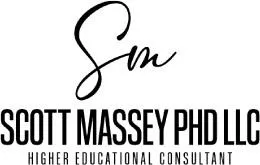BLOG
SCOTT'S THOUGHTS

Introducing the Success Coach Volume 7 Financing a Success Coaching Program
Budget is always the first concern for implementing any type of change, improvement, or program! In graduate schools, and in fact in any organization in the world, many beneficial ideas are sidelined when someone asks, “Yes, but how do we pay for it?” and there is no good answer. Successfully presenting a Student Success Coaching Model means justifying the costs to the people who hold the purse strings.
The major expense – in their opinion – will be one of manpower. Someone in the faculty, possibly someone hired specifically for the position, will have to be a paid Success Coach. Said coach must be trained, because as we have shown, there are some psychological practices that these coaches must employ if they hope to be successful.
We have presented a number of newsletters supporting this method. I hope that, by now, I don’t need to re-convince PA program directors that our research on success coaching is solid and the outcomes for programs utilizing the Student Success Coaching Model show considerable, measurable improvement over previous forms of remediation. (However, please feel free to visit the Massey & Martin, LLC website for our reference list of scholarly publications!). The issue today is how to present this option to the committee or board that must approve the financing.
Presenting to the Board
So, how exactly do we approach the stakeholder(s) who will provide the financial support for a Success Coaching program? Here is my advice:
Present preliminary plans for incorporating Student Success Coaching within the program in terms of manpower and resources.
Determine the cost as precisely as possible. This means deciding how many hours per week a Success Coach will be needed. Larger programs may require a full-time Success Coach.
Make clear that Success Coaching requires faculty who commit their time. Without funding, a coaching program is not sustainable.
Stress the positive financial returns of decreasing attrition, increasing persistence, and improved outcomes – some factors of which may be priceless. Prospective students look at attrition rates and PANCE pass-rates when they choose the schools to which they apply.
Stakeholder support should be assured.
Expected outcomes for the program should be clarified, i.e., we intend to improve our PANCE pass-rate by X percentage, or we intend to decrease attrition by X percentage, in X number of years.
Present a needs-based rationale for initiating a coaching program. This should be well-articulated, so develop this rationale by brainstorming (with your faculty or your own selected group) the answers to the following questions:
Based on our experience, has the need for this type of coaching in our PA program increased in the past 2-3 years?
Is our current system of remediation resulting in better student performance?
How do we know that students are even learning the information offered by the remediation exercises we provide?
How do we deal with cases when we believe that students should be decelerated or dismissed rather than continuing to remediate? How do we know when or if the best decision is to help a student transition out of our program? What do we base these decisions on? Do we have processes in place for this situation?
Here’s a valuable point to remember: the Student Success Coaching Model has processes in place to measure and/or answer these questions – and a system that starts very early in a student’s matriculation to help ensure that the need to “transition out” never occurs.
Celebrating success!
If your program adopts a Student Success Coaching Model, improved outcomes will soon become apparent. The results can be reflected on your program’s website, in increase average PANCE scores, and decreased attrition rates, and a happy, supportive student body that knows your program is invested in their success. Acknowledge and celebrate these successes in subsequent meetings with the people who approved the funding! There’s no better way to ensure that this community of support continues.
In our next newsletter, we’ll share some hands-on techniques we have found effective for Success Coaches, to deal with a variety of learning difficulties that may be encountered by PA students.

Introducing the Success Coach Volume 7 Financing a Success Coaching Program
Budget is always the first concern for implementing any type of change, improvement, or program! In graduate schools, and in fact in any organization in the world, many beneficial ideas are sidelined when someone asks, “Yes, but how do we pay for it?” and there is no good answer. Successfully presenting a Student Success Coaching Model means justifying the costs to the people who hold the purse strings.
The major expense – in their opinion – will be one of manpower. Someone in the faculty, possibly someone hired specifically for the position, will have to be a paid Success Coach. Said coach must be trained, because as we have shown, there are some psychological practices that these coaches must employ if they hope to be successful.
We have presented a number of newsletters supporting this method. I hope that, by now, I don’t need to re-convince PA program directors that our research on success coaching is solid and the outcomes for programs utilizing the Student Success Coaching Model show considerable, measurable improvement over previous forms of remediation. (However, please feel free to visit the Massey & Martin, LLC website for our reference list of scholarly publications!). The issue today is how to present this option to the committee or board that must approve the financing.
Presenting to the Board
So, how exactly do we approach the stakeholder(s) who will provide the financial support for a Success Coaching program? Here is my advice:
Present preliminary plans for incorporating Student Success Coaching within the program in terms of manpower and resources.
Determine the cost as precisely as possible. This means deciding how many hours per week a Success Coach will be needed. Larger programs may require a full-time Success Coach.
Make clear that Success Coaching requires faculty who commit their time. Without funding, a coaching program is not sustainable.
Stress the positive financial returns of decreasing attrition, increasing persistence, and improved outcomes – some factors of which may be priceless. Prospective students look at attrition rates and PANCE pass-rates when they choose the schools to which they apply.
Stakeholder support should be assured.
Expected outcomes for the program should be clarified, i.e., we intend to improve our PANCE pass-rate by X percentage, or we intend to decrease attrition by X percentage, in X number of years.
Present a needs-based rationale for initiating a coaching program. This should be well-articulated, so develop this rationale by brainstorming (with your faculty or your own selected group) the answers to the following questions:
Based on our experience, has the need for this type of coaching in our PA program increased in the past 2-3 years?
Is our current system of remediation resulting in better student performance?
How do we know that students are even learning the information offered by the remediation exercises we provide?
How do we deal with cases when we believe that students should be decelerated or dismissed rather than continuing to remediate? How do we know when or if the best decision is to help a student transition out of our program? What do we base these decisions on? Do we have processes in place for this situation?
Here’s a valuable point to remember: the Student Success Coaching Model has processes in place to measure and/or answer these questions – and a system that starts very early in a student’s matriculation to help ensure that the need to “transition out” never occurs.
Celebrating success!
If your program adopts a Student Success Coaching Model, improved outcomes will soon become apparent. The results can be reflected on your program’s website, in increase average PANCE scores, and decreased attrition rates, and a happy, supportive student body that knows your program is invested in their success. Acknowledge and celebrate these successes in subsequent meetings with the people who approved the funding! There’s no better way to ensure that this community of support continues.
In our next newsletter, we’ll share some hands-on techniques we have found effective for Success Coaches, to deal with a variety of learning difficulties that may be encountered by PA students.
Don't miss out on future events!
Subscribe to our newsletter

© 2026 Scott Massey Ph.D. LLC

